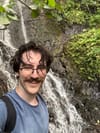My Freshman Year at UC Berkeley

I’ve just finished my Freshman year at the University of California, Berkeley. Reflecting back on my experiences, I feel I've learned a lot—both in and out of the classroom. I've had an amazing year at Berkeley, and I feel incredibly fortunate to be able to attend a university that has so many amazing students and professors. Whether it has been the new friendships I've created, the unexpected opportunities I've had, or the important life lessons I've learned, I wouldn’t change a thing about my Freshman year.
Going into my freshman year, I had just lived the best summer of my life. I spent almost all of my time with my high school friends and my girlfriend who I had recently started dating. I even went on a wild trip to Europe with my best friend.
I was at the highest point in my life, and, as is true for many soon-to-be-freshman, the uncertainty of going to college scared me. Would I continue my current friendships? Would I make new friends? Would I succeed in my classes? Luckily for me, the answer to all of these questions was going to be yes, resulting in the continuation of my happiness beyond the best summer of my life.
Table of Contents
- MUSIC 116A - Jazz Theory and Performance 1
- MUSIC W26AC - Music in American Cultures
- CS 61A - The Structure and Interpretation of Computer Programs
- MATH 113 - Introduction to Abstract Algebra
The First Two Weeks
Move-In Day
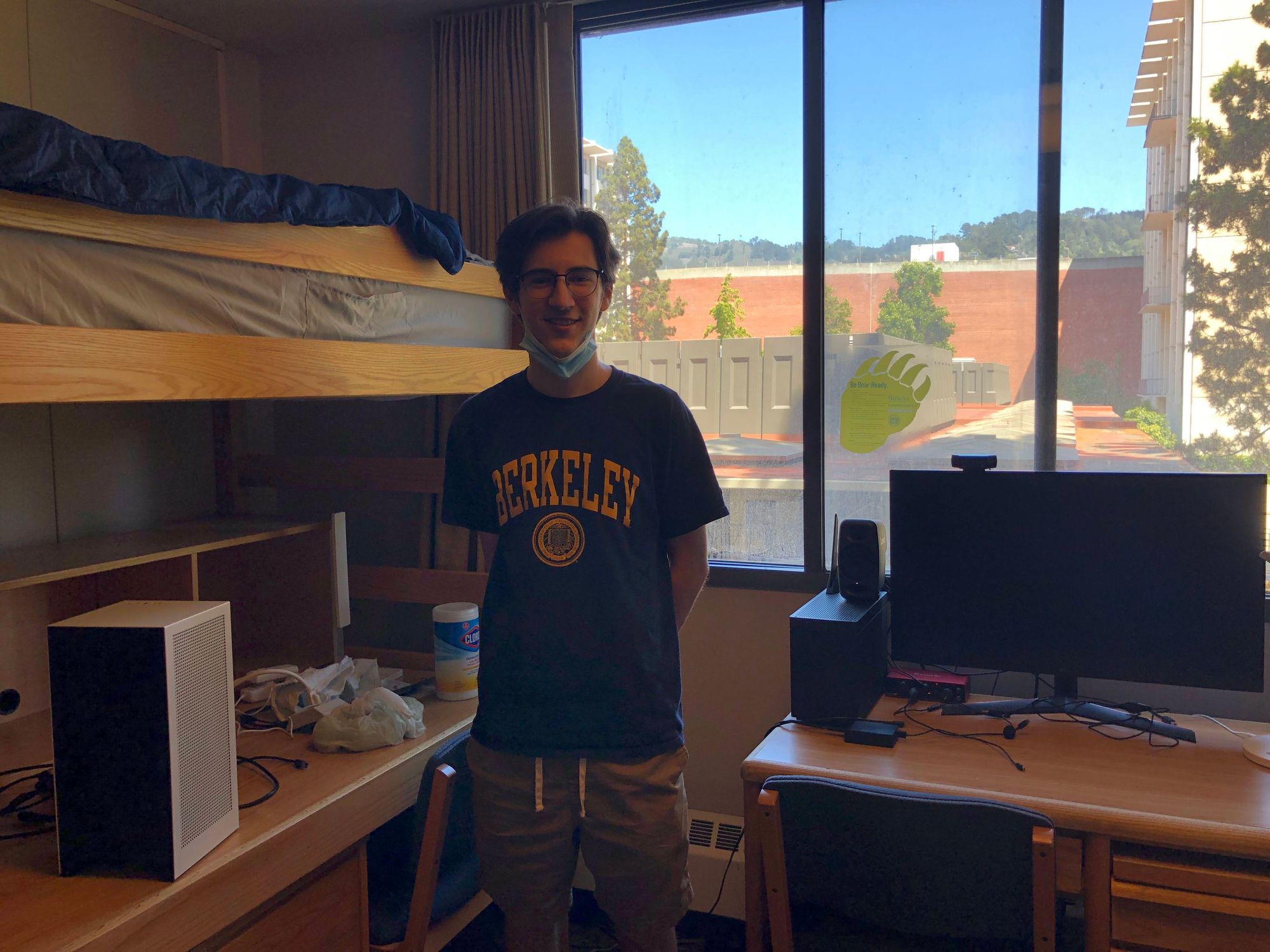
I moved into my dorm on August 17, 2021. I haven’t been more nervous about anything than I was on move-in day. I selected random roommates, so I had never met them, I had no clue which room or floor I'd be living in, and I was anxious about making new friends. I also didn’t know if I packed too much or too little—spoiler: I packed too much.
After taking a Covid test, I found a line to get my room information and key. After unpacking with my parents, I decided to explore campus some more. Move-in day was only my second time on the UC Berkeley campus—the first time being a guided tour just before the lockdown in 2020. After taking a few pictures and saying goodbye to my parents, I prepared myself to meet as many people as possible.
I remember leaving my door wide open so people could talk to me. That day I met some of the people who would become my closest friends throughout the year. After a few people from the floor and I got Chipotle, we attended a ‘mandatory’ zoom orientation meeting in our rooms, and I called it a night.
Golden Bear Orientation
A few days after everyone had moved in, each freshman was assigned to a Golden Bear Orientation (GBO) group. In these groups, we played games, attended an improv show, ate food at local restaurants, toured the campus, and asked our GBO leaders for college advice. While not perfectly organized, this orientation helped cement many of my friendships and gave me more familiarity with the school.
I even wrote a letter to myself to read at the end of freshman year. I talked about wanting to succeed academically and continue practicing music. It was interesting to read at the end of an eventful year, reflecting on how much I had changed.
UC Jazz
In high school, I was in the jazz band all four years, so continuing to play music was a high priority for me coming to Berkeley. So when I realized there was a jazz organization, I knew I had to audition. After exploring the Cesar Chavez Student Center, I was able to find the sign-up sheet just a few days before the deadline. UC Jazz gave me the opportunity to play with some of the most talented musicians I've ever played with. While I had gone into Berkeley just hoping to continue playing every once in a while, UC jazz allowed me to play even more than ever, helping me grow as a musician.
Student Combo
I auditioned for a combo a couple of days after arriving at the school. I used a very nontraditional bass—a left-handed, short-scale, fretless, acoustic bass—as it was the only instrument I initially brought with me. For my audition, I had to play a song of our choice, improvise in a funk style over D minor, and sight-read “Yardbird Suite”.

I was fortunate enough to place into one of the three advanced level combos, where I had the opportunity to play with incredible musicians. I gained so much confidence soloing in this combo, especially on upright bass. Also, I was able to play at amazing venues like Hertz Hall and Freight and Salvage.
Student-Faculty Trio
Towards the beginning of the first semester, I received an email from the director of the program, asking if another pianist and I wanted to try playing together as a trio for a rehearsal. We ended up having so much fun together, we decided to meet weekly and eventually perform together in a show at the end of the semester.
In this trio, I gained even more confidence in my own style. Being a third of the band, it was imperative that I play actively, which I really enjoyed. I also got to write an original tune for us to play, which I of course named after the second midterm for CS 61A. I’m really looking forward to continuing to play with this group in future semesters.
Bobby G’s
One of the most fun experiences of UC Jazz was playing at Bobby G’s on Saturdays from 7-10 pm. While I didn’t play every week, every time that I did play was insanely fun. Getting to play standards with four other talented musicians for three hours is exciting on its own, but when factoring in the entertaining crowd, passing musicians who join in, and free pizza, the night always ends up being the highlight of my week.
Also, it was really fun to stop by the venue on days when I wasn’t playing as I could always drop in and play for one song. Although I play left-handed, I know a little bit of right-handed upright bass, so it’s not completely impossible for me to play an easy standard.
Fall 2021
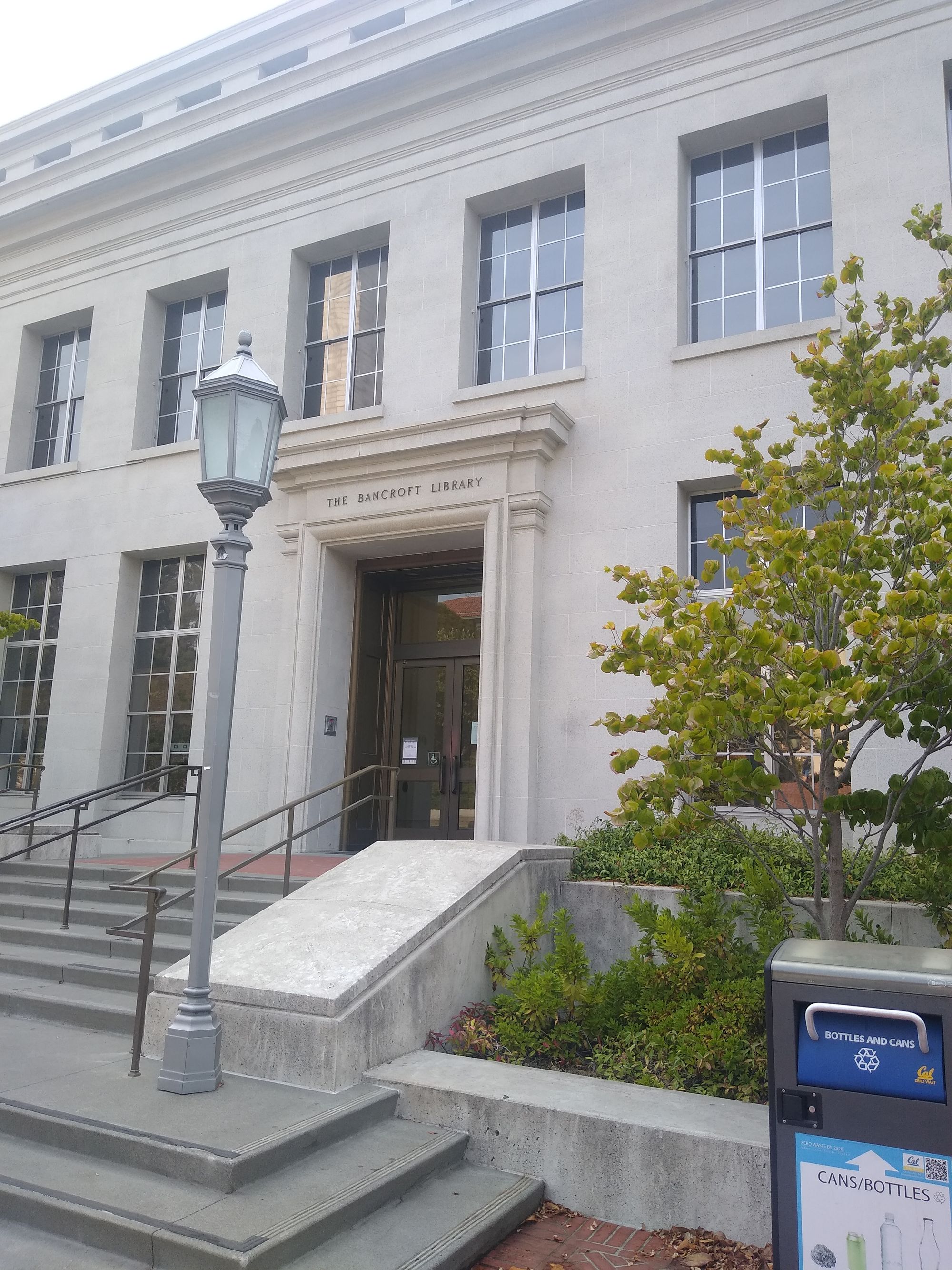
In my first semester at Berkeley, I took four classes. My academic schedule wasn’t too demanding, so I had plenty of time to make new friends and play in UC Jazz. Looking back, this was a good decision as taking more classes would have compromised my social life at a time when everyone else is trying to make new friends too.
I took MUSIC 116A, MUSIC W26AC, CS 61A, and MATH 113, which constituted 15 units (MUSIC 116A is 3 units, and the other classes are all 4). Overall, my technical classes were much harder than my music classes, but each class definitely taught me a lot.
MUSIC 116A - Jazz Theory and Performance 1
MUSIC 116A, taught by the amazing Ben Goldberg, was an incredible course. It opened my eyes—and ears—to thinking about jazz in a completely new and unique way. Whether it was feeling scales through your footsteps to connect each note to your body, grunting and shouting in between playing to better connect your improvisation to your emotions, or attempting to play at the extremes to gain a better intuition for everything in between, this class explored ideas in a completely different way than I had ever thought of.
One big theme of the class was playing with shapes. At first, I had no clue what the professor was talking about when he first mentioned this concept. It seemed too abstract to make sense, but as I tried to learn more about it with an open mind, it made more and more sense. The idea is that certain musical ideas can be imagined as closed, abstract shapes and that playing with these shapes is a useful tool for improvisation. For example, instead of thinking about soloing over chord progressions, one might consider playing different variations of a few shapes.
Although I still don’t fully understand this concept and need much more practice with it, I definitely find it a useful framework to approach soloing with. In fact, that is how I feel about the majority of topics presented in this course. I didn’t master anything taught in this course, but I was introduced to a lot of different concepts to practice further.
MUSIC W26AC - Music in American Cultures
MUSIC W26AC is the easiest course I’ve taken at Berkeley—and it might be easier than any of my high school classes too. We covered the history of music in different American cultures throughout the history of the United States.
This class was asynchronous, so I ended up not retaining very much information. However, one highlight of the class was when we watched 13th, a very informative Netflix documentary about the history of the prison-industrial complex in the United States.
CS 61A - The Structure and Interpretation of Computer Programs
At Berkeley, there are a few famous computer science classes. Among these classes, CS 61A is by far the most well-known. As the first required class for computer science majors, it is an introduction to the field through the beautiful language of Python. Covering topics such as functional programming, object-oriented programming, recursion, syntax, Scheme, SQL, and regular expressions, CS 61A completely changed my perspective on computer science.
Before taking this class, my only exposure to computer science was AP Computer Science A in my senior year of high school. While I found the content somewhat interesting, the format of online school definitely hindered my commitment and passion for the class. On the other hand, CS 61A was extraordinarily engaging for me. Taught by the legendary professor John DeNero, CS 61A was extremely well-run, and I found it very easy to find friends in this class to work with.
Additionally, the projects in CS 61A were very interesting and taught me a lot. We completed four projects: Hog, Cats, Ants, and Scheme. Of these, the most instructional to me were Ants and Scheme.
Ants is essentially a case study in object-oriented programming. The goal of the project was to create a Plants v.s. Zombies clone called Ants v.s. Some Bees. We learned how to utilize inheritance to organize different objects into hierarchies. For example, we first wrote basic logic for all ants, bees, and tiles, and eventually filled in specific details for each type of ant, bee, or tile. While this project wasn’t too challenging, it definitely provided some more insight into the advantages and disadvantages of object-oriented programming.
Scheme is a Lisp programming language that we learned towards the end of the course. The goal of this project was to recreate this language using Python. Because of the simplistic properties of Scheme, this project was manageable in scope but conceptually challenging. The main problems of the project included parsing strings to evaluate operands in the correct order, detecting and handling keywords, and allowing for the creation of user-defined procedures. Also, the extra credit—implementing tail-call optimization—was very difficult, but rewarding.
Overall, I would recommend CS 61A to anybody, whether or not they plan on majoring in computer science. The course is also available to anyone outside UC Berkeley on the course website. I’m tremendously grateful for the opportunity to take this class.
MATH 113 - Introduction to Abstract Algebra
Having finished all of the lower division mathematics courses at community college, I was able to start with upper division, proof-based classes at Berkeley. Due to scheduling conflicts, I took MATH 113 instead of the recommended MATH 110, which I took next semester in the Spring.
In this class, we learned about groups, rings, and fields. We studied specific examples of each of these structures, such as the integers modulo n, the general linear group, the cyclic group, polynomial rings, and even some basics of quaternions. We also learned about different ways to compare groups, rings, and fields by studying homomorphisms and isomorphisms between them. We also learned about each of the isomorphism theorems as well as field extensions. Finally, the class ended with a very brief introduction to Galois theory.
The professor, Rachel Webb, was very helpful in her lectures. Each lecture added a lot to my learning beyond the required textbook reading. With 3 homework assignments per week, this class had a high workload, but I found it worth it as I found the content interesting.
Spring 2022
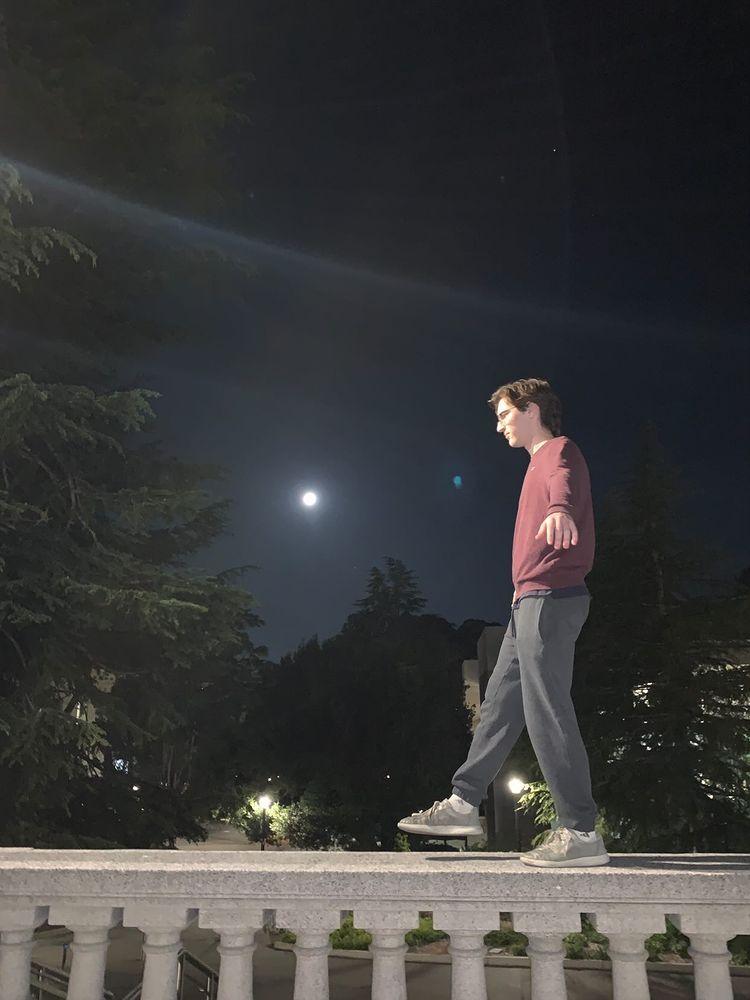
In my second semester, I also took four classes but also tried to involve myself in more extracurricular activities outside of UC Jazz. I took SPANISH 1, EECS 16A, CS 61B, and MATH 110, which totaled 17 units (SPANISH 1 was 5 units and everything else was 4). I also joined a quantum computing club and tried intramural sports with some friends.
SPANISH 1 - Elementary Spanish
I satisfied my high school’s language requirement with 1 semester of ASL at a community college, but this failed to satisfy Berkeley’s language requirement. Thus, I have to take a language course up to the second level. Knowing many people that speak Spanish, and having just been to Spain and wanting to go to Mexico in the future, I chose to learn Spanish.
This ended up being a great decision, as this was an amazing class. I had a lecture and a homework assignment each day, so my learning was constant throughout the semester. The pace of the class was at the perfect speed—I never felt like I was wasting my time with easy content, but I also never felt completely lost. And best of all, the lecturer for this class was amazing! He made learning Spanish incredibly fun and engaging.
EECS 16A - Designing Information Devices and Systems I
EECS 16A is an introductory linear algebra and circuits course. Taking this class at the same time as upper division linear algebra made some of the math in this course easier to understand, but it still definitely helped me gain a strong intuition of the abstract ideas covered in MATH 110.
By far my favorite part of this class was the labs (except for the 8 am time of course). Every Friday, from 8 to 11, my lab partner and I worked on implementing a circuit design we learned in class. We created two different types of touchscreens, using resistors and capacitors. We also wrote code for an acoustic positioning system using trilateration. Each lab was run very well and taught me a lot about engineering different systems. Although I don’t see myself continuing down electrical engineering as a career path, this class showed me that learning to design basic circuits could be a very interesting hobby to pursue in the future.
CS 61B - Data Structures
As of writing this, to declare the computer science major at UC Berkeley, one needs to take 3 classes and achieve a certain GPA threshold. For me, the last class I needed to take was CS 61B. Like CS 61A, this class is well-known at Berkeley and was also taught by a legendary professor: Paul N. Hilfinger. In fact, I was lucky enough to take the class during his last semester of teaching at Berkeley.
This class was taught in Java, and we learned topics such as testing programs, time complexity analysis, tree searching, sorting algorithms, and graphs. CS 61B is a more project-focused course. We used what we learned about data structures to program four different projects throughout the semester: Blocks, Enigma, Ataxx, and Gitlet.
Blocks was a shorter project about making a Tetris-like game where you fill a grid with blocks and empty out rows and columns whenever they are completely filled. Enigma was about recreating the encryption machine used by the Germans in World War 2. My knowledge of abstract algebra was actually very useful in this project as the theory of cycles and permutations was important to understanding Enigma’s implementation. Ataxx is a 2 player game where players extend and jump their pieces. The hardest part of this project was implementing an AI with a depth of 4 moves that could work efficiently using alpha-beta pruning. The last project, Gitlet, was by far the most challenging. In this project, we had to make a clone of Git that could handle committing, branching, merging, and more. This project had no skeleton code whatsoever, so it was very interesting to talk to friends to see how our underlying implementations differed.
CS 61B was an incredibly fun and interesting course. I would definitely recommend it to anyone interested in learning about programming with data structures.
MATH 110 - Linear Algebra
MATH 110 might be the most difficult math course I’ve ever taken. The level of rigor felt much higher than in MATH 113. Despite only having 1 homework assignment per week—compared to 3 per week the previous semester—this class gave me a real challenge.
We went through Sheldon Axler’s Linear Algebra Done Right, which is a fantastic book for gaining an intuition about the complicated ideas of linear algebra. The book decides to teach trace and determinant at the very end, which at first felt odd, but it made sense by the end.
The coolest thing about this course is that understanding linear algebra at a higher level helps with understanding so many other things. Whether it’s neural networks or quantum computing, I see linear algebra everywhere I go, which makes this course super useful.
QC@B - Quantum Computing at Berkeley
Although I wasn’t able to attend every meeting towards the end of the semester, QC@B was a really fun club. In each weekly meeting, we attended a student lecture/lab where we learned the basics of quantum computing and the Python Qiskit module. I also learned how to apply my skills learned in MATH 110 to quantum computing. The coolest thing we learned was the Deutsch-Jozsa Algorithm, which was able to reduce the time complexity from O(2^N) to O(1) using entanglement and interference.
Intramural Sports - CoRec Soccer and Basketball
In the middle of the Spring semester, my friend asked if I wanted to join his intramural soccer team. I said yes but then found out a couple of minutes later that his team was actually full. But now that the thought of playing soccer had been in my mind, I was determined to make a team of my own. I asked everyone on my floor if they wanted to play on a soccer team, and after some convincing, we finally had enough people to play. We also made a basketball team since signing up for two sports didn’t cost us any extra money.
We had our first game in the middle of the semester, and it was a complete blowout. We lost 9-2. Of course, it was still insanely fun to run around and laugh with friends. The funniest part of it all was that we just had our best game of the season! Our later games had scores like 10-0, 12-0, and even 22-0. Soccer just didn’t seem to be our sport, but maybe basketball was?
Nope. One time in basketball we lost so bad that the scoreboard had to loop back around like it was modulo 100. We lost 122-20, but it only looked like 22-20. But regardless of the score, everyone we played against was super friendly, and we always had an amazing time playing together.
Participating in intramural sports is something that I always looked forward to in college, and although I didn’t win as much as I expected to, I had much more fun than I thought possible.
Conclusion
So that’s basically my freshman year recapped. It’s nice writing about this and remembering all of the fun memories of the last year. I’ll look back on this year very fondly for a long time.
Now I’m back home for the summer. Right now, I’m enrolled in a deep learning and neural networks course on Coursera. In a few weeks, I’ll be starting summer classes where I plan on taking Spanish 2, philosophy, and biological anthropology to fill out some prerequisites. Next year, I’ll be living at one of the co-ops on the north side of Berkeley. I’m looking forward to meeting a new community of amazing people. I want to thrive, grow, and learn as much as possible.
Thanks for reading my first post! Going forward, my posts will be more technical in nature. I hope to write about specific problems that I may encounter or just topics I’m finding interesting. If that’s something you might be interested in, be sure to check back here soon.
